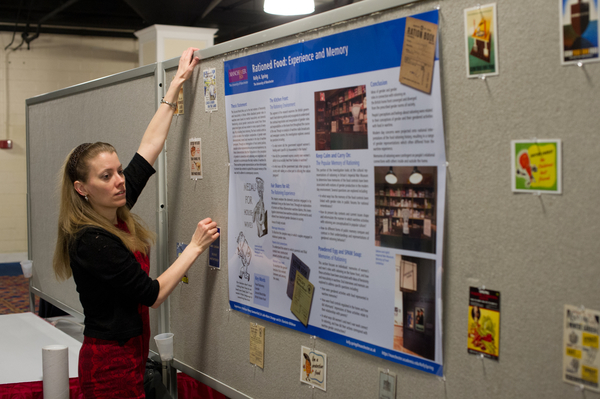The American Historical Association invited the audience at the poster session at the annual meeting in Washington, DC, to vote for their favorite poster. Approximately 150 historians attended the session and voted.
The award for the best poster went to “Rationed Food: Experience and Memory,” by Kelly Spring, a PhD candidate at the University of Manchester. Spring wins free registration to the 2015 annual meeting in New York.
Remember, the deadline for submitting poster proposals for 2015 has been extended until March 17, so it is not too late to follow in her footsteps!
We invited Spring to share her thoughts on why the poster is an effective format for presenting historical research, and how to design an effective poster:
Why is presenting a poster worthwhile?
The open nature of the poster session allows presenters to discuss their work with a large number of diverse researchers.
The opportunity to speak one-on-one with other historians provides an excellent networking opportunity and a good way to promote one’s research.
The poster session offers researchers the flexibility to present their findings in creative and unusual ways that are not possible through other conference presentation formats.
If it is not possible for researchers to form a panel at the AHA meeting, the poster session offers them an alternative means of exhibiting their findings.
The poster session represents a stress-free environment in which researchers can showcase their work.
The length of time (2 ½ hours) allotted to poster presentations is significantly longer than other meeting sessions, allowing researchers a great deal of exposure for their research.
What are some tips for putting together an effective poster?
The poster should be designed in an interesting and visually appealing manner, using a quality design program.
The poster should include useful information such as contact details, key research questions and aims, and research conclusions.
Don’t overcrowd the text on the poster. Make it easily readable for the viewer in terms of font style and letter size.
Text should be largely jargon free, and ideas should flow from left to right on the page.
This post first appeared on AHA Today.
Tags: AHA Today 2014 Annual Meeting
Comment
Please read our commenting and letters policy before submitting.







